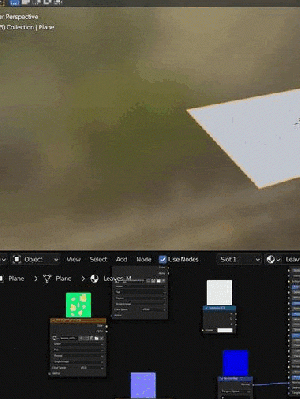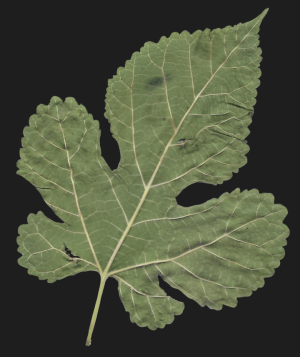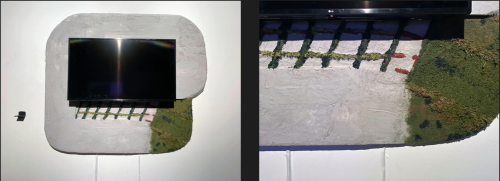Professional Practice Planning: Difference between revisions
(Added images) |
|||
| Line 144: | Line 144: | ||
== Related links == | == Related links == | ||
*[https://expandedmedia01.wordpress.com Original content hosted on artist website] | *[https://expandedmedia01.wordpress.com Original content hosted on artist website] | ||
* | *[['Onward' BTS]] | ||
* | *[['Onward' & Digital Content Creation Tools]] | ||
*[https://www.arielrenejackson.com/ Artist website] | *[https://www.arielrenejackson.com/ Artist website] | ||
*[https://www.alexgoss.net/ Alex Goss website] | *[https://www.alexgoss.net/ Alex Goss website] | ||
Revision as of 18:01, January 19, 2024
This is an artist page by Aryel René Jackson. This page is part of the project: Onward by Aryel René Jackson and Alex Goss. This project was part of the 2022 CATS+ 1.0 cohort.
Finding the '5E Model' in your art practice
Attendees are encouraged to review and discuss their practice in relation to the '5E Model' that exists in Education Philosophy and praxis.
The ‘5E Model’ is a learning theory that suggests that people construct knowledge and meaning from experiences. This theory falls under the category of ‘constructive learning’ by requiring educators to build inquiry, exploration and assessment into their instructional approach.
Objective
What is this? An art practice evaluation exercise.
Who is this for? This exercise is for emerging and established Artists and Educators who want to evaluate the needed process and resources for artistic goals. Professional Practice Planning is applicable to artistic practices and individual projects or collaborations.
Professional Practice Planning is an opportunity to learn about the ‘5E Model’, a science-oriented inquiry-focused method, and examples of how to apply it to the artist’s studio, where the artist/teacher instructs themselves.
5E Model Breakdown
Research suggests that there is a set order of events that facilitates learning, known as a learning cycle. Educators J. Myron Atkin and Robert Karplus argued in 1962 that effective learning cycles involve three key elements: exploration, term introduction and concept application.
The findings of Atkin and Karplus directly informed the creation of the 5E Model, which focuses on allowing students to understand a concept over time through a series of established steps, or phases. These phases include Engage, Explore, Explain, Elaborate and Evaluate.
| '5Es' | For Proposal | For the Artist | For the Educator |
|---|---|---|---|
| Engage | Gain attention and present objectives | A process of understanding what you already know and subsequently want to know. | Answer the question ‘What will we learn today?’ |
| Explore | Recall prior knowledge | During the exploration phase, make observations and come up with questions about what you may not know or understand well enough. | Respond to the question ‘What skills do we have that can relate to what we don’t know?’ |
| Explain | Present information and provide a learning guide | Ask the questions necessary to determine what may stand in your way as we begin to look for solutions. | Highlight how different cycles show up throughout the process. |
| Elaborate | Elicit performance and provide feedback | Think of this phase as the ‘coming up with solutions’ part of the 5E Model. Begin listing resources that you need in order to reach your artistic goal. What do you already have and what additional resources do you need? | Give students a moment to respond to questions given by the instructor and/or peers. |
| Evaluate | Assess performance and enhance retention by relating utility to a future project. | Once you have your resources listed, become aware of local, national and international opportunities to gather the resources needed | Connect current process to a future project/lesson/challenge. |
Onward
Now, let’s go over examples of how each ‘E’ shows up in a collaboration project entitled Onward between Ariel “Aryel” René Jackson and Alex Goss.
Onward consists of a real-time digital simulation encased with sculpted foam and mixed materials. film-based artist, Aryel Jackson and sculpture, Alex Goss, collaborate with the shared interest in how visual cues translate and communicate the intended use of a communal space. In the pursuit of designing and imagining a modular space, Onward seeks to create a modular case study of the charged space of ‘The Cage’ to become a site of continual change.
In 2020, Alex Goss and Ariel “Aryel” René Jackson co-curated a digitized exhibition called Inner Out that took place at Moonmist Gallery, founded by Alex Goss in Houston, TX. Two years later, Jackson invites Goss to collaborate on Onward.
Click to see what Goss and Jackson's back and forth process entailed...
01|Engage
What are your artistic goals? The artistic goal is to address a charged space. Onward is interested in how the intended use of a communal space communicates visual cues. In the pursuit of a modular space, Onward becomes a case study that opens the site of ‘the cage’ into one of continual change.
02|Explore
What skills do I already have? Professional Experience | Artists and educators typically have skills from a prior or current profession.
New | A sign of a healthy art or teaching practice is being enthusiastic in the cycle of finding and acquiring new skills.
Laborious | Many artists and educators have skills that are not necessarily funto do but come in handy.
| Skill | Jackson | Goss |
|---|---|---|
| Professional | Video Editing | Fabrication |
| New Interest | Mixed Collage | 3D Modeling |
| Laborious | Performance | Storytelling |
03|Explain
What limitations are you facing in pursuit of your artistic goal? Explaining how things affect us puts a name to our challenges. For the artists, making abstract limitations concrete with the aid of text and language, begins a tangible interaction with ways to improve our condition(s).
- Global Pandemic
- physical limitations
- Challenging sci-fi desires of technology creating ease
- Health conditions pre-determining limitations/threats
- Lack of space
- Lack of affordable studio space
- Size and durability of a project becomes costly
- Budget/Lifestyle
- scarcity versus abundance
- scarcity: fear of/reality of not having enough resources.
- abundance: everything potential to become a resource.
04|Elaborate
List resources that could help you reach your artistic goal. When we think of resources we tend to think of ‘fiscal’. If we do not have enough financial resources, we could think about routines that will help us be mindful about creating systems that work for our creative and artistic goals. Routines help us to show up even when we don’t want to.
Informal Online Learning | YouTube or TikTok Informal online learning could be considered controversial with the high amounts of misinformation. Pay attention to positive and helpful YouTube videos and TikToks in order to train your algorithm to show you more of what you want to pay attention to.
Formal Education | Provides a fiscal/mobile transition Everyone goes to school for different reasons. Figure out yours and make your education work for where you are in your artistic practice/process.
Slowing Down | Prioritizing a sustainable process/practice You don't have to be doing everything all at once.
Accountability | Showing up for community and self As simple as it sounds, showing up to events and/or volunteering with your community helps you maintain a healthy sense of self.
Cage Duo — The Future is Phygital
As a result of the CATS+ Residency, artists and curators Ariel “Aryel” René Jackson and Alex Goss collaborated on creating a case study that seeks to help illustrate the system of collaboration in digital/physical proposals.
Cage Duo Residency builds on the case study of Onward in order to become a phygital residency where digital, sculpture and installation artists are invited to propose a transformation or re-purposing of the industrial caged-trailer that the Cage Duo (previously known as Cage Match Project) is known for.
Cage Duo Residency provides interested artists a challenge in creating new material and incorporating digital processes into their practice.
Cage Duo values the idea that objects have past and future lives are not simply repaired but revisited. Artists are encouraged to understand the ‘cage’ as a framework to wrestle with timely concerns and original thinking in their respective practices.
Phygital
The term phygital simply combines the words ‘physical’ and ‘digital’ to create a new work. While it is unclear of who coined the term, phygital was used at the height of the COVID-19 pandemic to refer to the transition that companies were forced to make in order to reach sales goals.
While phygital is used to refer to strategies of reassessing a company’s customer’s experience, for the artist, the ‘customer’ becomes the ‘viewer’. With this shift, there is an opportunity for artists to test out this term’s limits as a means of understanding the individual’s relationship to its community and environment.
For the artist, digital tools and processes offer a unique opportunity to highlight challenges and moments of achievement in previous works and/or works that are too costly to experiment with physically.
Ultimately the goal is to create greater accessibility for physical artists interested in developing their digital skills and for digital artists to engage in the term ‘phygital’ in new and unexpected ways by translating digital works into a real space.
Artist Bios
Aryel René Jackson is a Black creole anti-disciplinary film-based artist whose practice considers land and landscape as sites of internal representation. Themes of transformation are embedded in their use of repurposed imagery and objects, video, sound, and performance. Jackson’s work is influenced by their afro-creole Lwizyan heritage and Black American cultural language. They live and work in Texas and teach at Texas State University and at The University of Texas at Austin. Jackson is an alum of the Skowhegan School of Painting and Sculpture, Royal College of Art Exchange Program, and The Cooper Union. Their work has been shown nationally and internationally. arielrenejackson.com
Alex Goss is a sculptor, educator, and freelancer committed to fostering mentorship in digital and physical 3D and time-based mediums. Drawing inspiration from manufacturing waste, Goss creates projects that breach the logic of mass production by emphasizing unconformity and cast-offs. Alex received his BFA in Art from the Cooper Union and his MFA in Sculpture from Virginia Commonwealth University. Alex has held solo exhibitions in New York, Baltimore, and Houston. Alex is a co-founder and organizer of Moonmist, an artist-run project space in Houston, TX. He lives in Richmond, VA with his dog Butterbean. alexgoss.net


